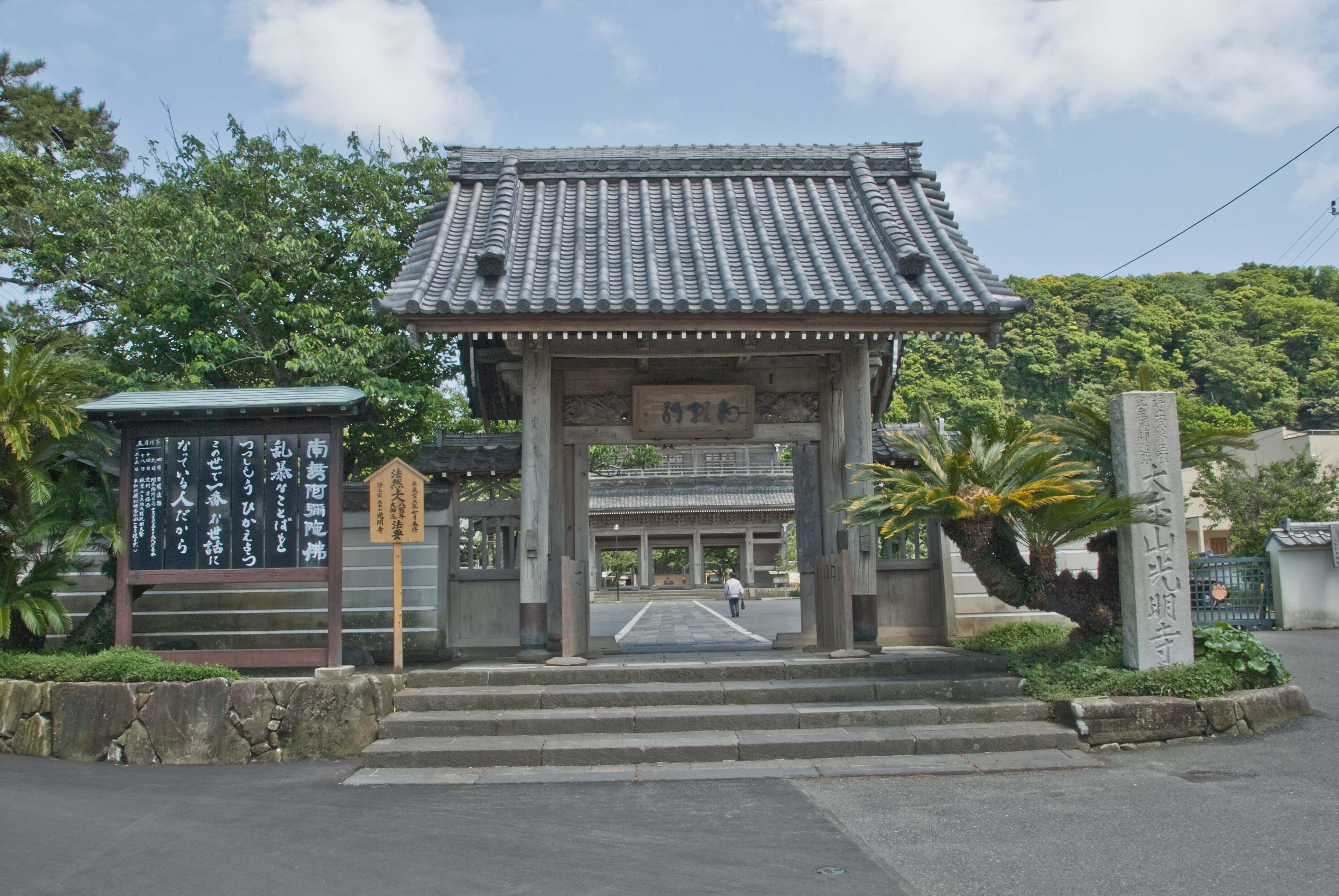|
Enkaku-ji (Naha)
''ufutira'', lit. "the great temple" was a Rinzai Buddhist temple and royal ''bodaiji'' of the Ryūkyū Kingdom, in Naha, Okinawa. The temple was erected during the reign of King Shō Shin (r. 1477–1526), the first abbot being Kaiin Shōko (). It was also used as ''bodaiji'' of Ryukyuan kings. Ryukyuan kings would visit Enkaku-ji, Tennō-ji and Tenkai-ji after their ''genpuku'' and investiture. Enkaku-ji was recognized as a national treasure of Japan in 1933, but it was destroyed in the 1945 battle of Okinawa. Only the ''sōmon'' (general gate) and were reconstructed in 1968 because of lack of historical records. The government of Okinawa Prefecture began plans to reconstruct its ''sanmon'' in 2014. See also *Tennō-ji (Okinawa) *Tenkai-ji *Sōgen-ji was a Buddhist temple and royal mausoleum of the Ryūkyū Kingdom, located in Naha, Okinawa. It was erected during the reign of King Shō Shin (r. 1477–1526), and destroyed in the 1945 battle of Okinawa. In 1496, memoria ... [...More Info...] [...Related Items...] OR: [Wikipedia] [Google] [Baidu] |
Sōmon
is the gate at the entrance of a Buddhist temples in Japan, Buddhist temple in Japan.Iwanami Japanese dictionary, 6th Edition (2008), DVD version It often precedes the bigger and more important ''sanmon''. References [...More Info...] [...Related Items...] OR: [Wikipedia] [Google] [Baidu] |
Kyūyō
is an official history of the Ryūkyū Kingdom compiled between 1743 and 1745 by a group of scholar-officials led by . Written in kanbun, and numbering twenty-two scrolls, a supplementary volume in three scrolls documents relations with Satsuma, while a separate volume known as is a compendium of one hundred and forty-two legends and folktales formerly transmitted orally. Later records continued to be added to the chronicle until 1876. The name, like for Nagasaki and for Satsuma, is likely a poetic invocation of "Ryūkyū". See also * List of Cultural Properties of Japan - writings (Okinawa) This list is of the Cultural Properties of Japan designated in the categories of and for the Prefecture of Okinawa. National Cultural Properties Classical texts As of 1 August 2020, two Important Cultural Properties have been designated, be ... References {{DEFAULTSORT:Kyuyo Japanese chronicles Ryukyu Kingdom Edo-period history books ... [...More Info...] [...Related Items...] OR: [Wikipedia] [Google] [Baidu] |
Buddhism In The Muromachi Period
Buddhism ( , ), also known as Buddha Dharma and Dharmavinaya (), is an Indian religion or philosophical tradition based on teachings attributed to the Buddha. It originated in northern India as a -movement in the 5th century BCE, and gradually spread throughout much of Asia via the Silk Road. It is the world's fourth-largest religion, with over 520 million followers (Buddhists) who comprise seven percent of the global population. The Buddha taught the Middle Way, a path of spiritual development that avoids both extreme asceticism and hedonism. It aims at liberation from clinging and craving to things which are impermanent (), incapable of satisfying ('), and without a lasting essence (), ending the cycle of death and rebirth (). A summary of this path is expressed in the Noble Eightfold Path, a training of the mind with observance of Buddhist ethics and meditation. Other widely observed practices include: monasticism; " taking refuge" in the Buddha, the , and the ; ... [...More Info...] [...Related Items...] OR: [Wikipedia] [Google] [Baidu] |
Buddhism In The Ryukyu Islands
Buddhism ( , ), also known as Buddha Dharma and Dharmavinaya (), is an Indian religion or philosophical tradition based on teachings attributed to the Buddha. It originated in northern India as a -movement in the 5th century BCE, and gradually spread throughout much of Asia via the Silk Road. It is the world's fourth-largest religion, with over 520 million followers (Buddhists) who comprise seven percent of the global population. The Buddha taught the Middle Way, a path of spiritual development that avoids both extreme asceticism and hedonism. It aims at liberation from clinging and craving to things which are impermanent (), incapable of satisfying ('), and without a lasting essence (), ending the cycle of death and rebirth (). A summary of this path is expressed in the Noble Eightfold Path, a training of the mind with observance of Buddhist ethics and meditation. Other widely observed practices include: monasticism; "taking refuge" in the Buddha, the , and the ; and ... [...More Info...] [...Related Items...] OR: [Wikipedia] [Google] [Baidu] |
